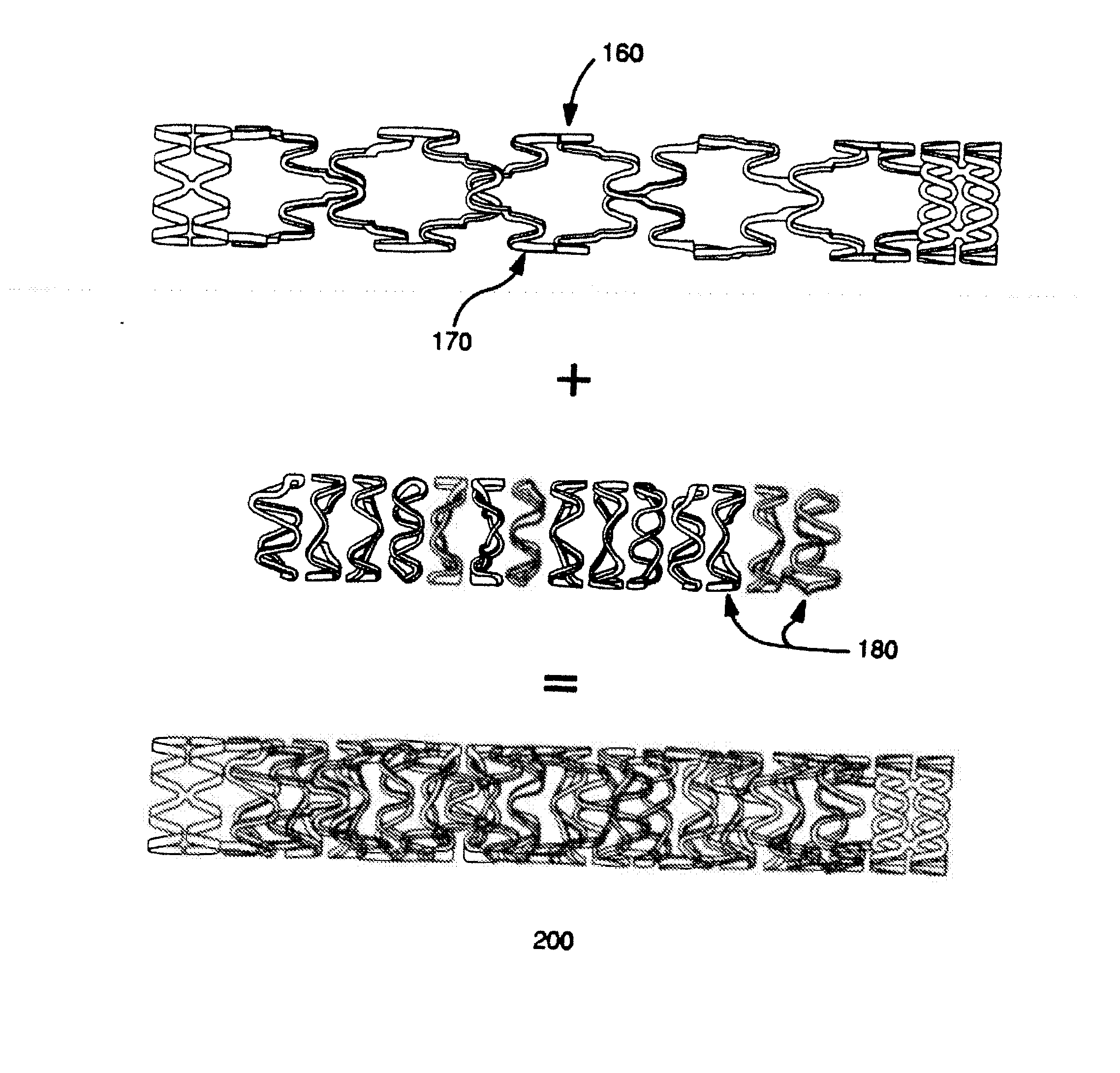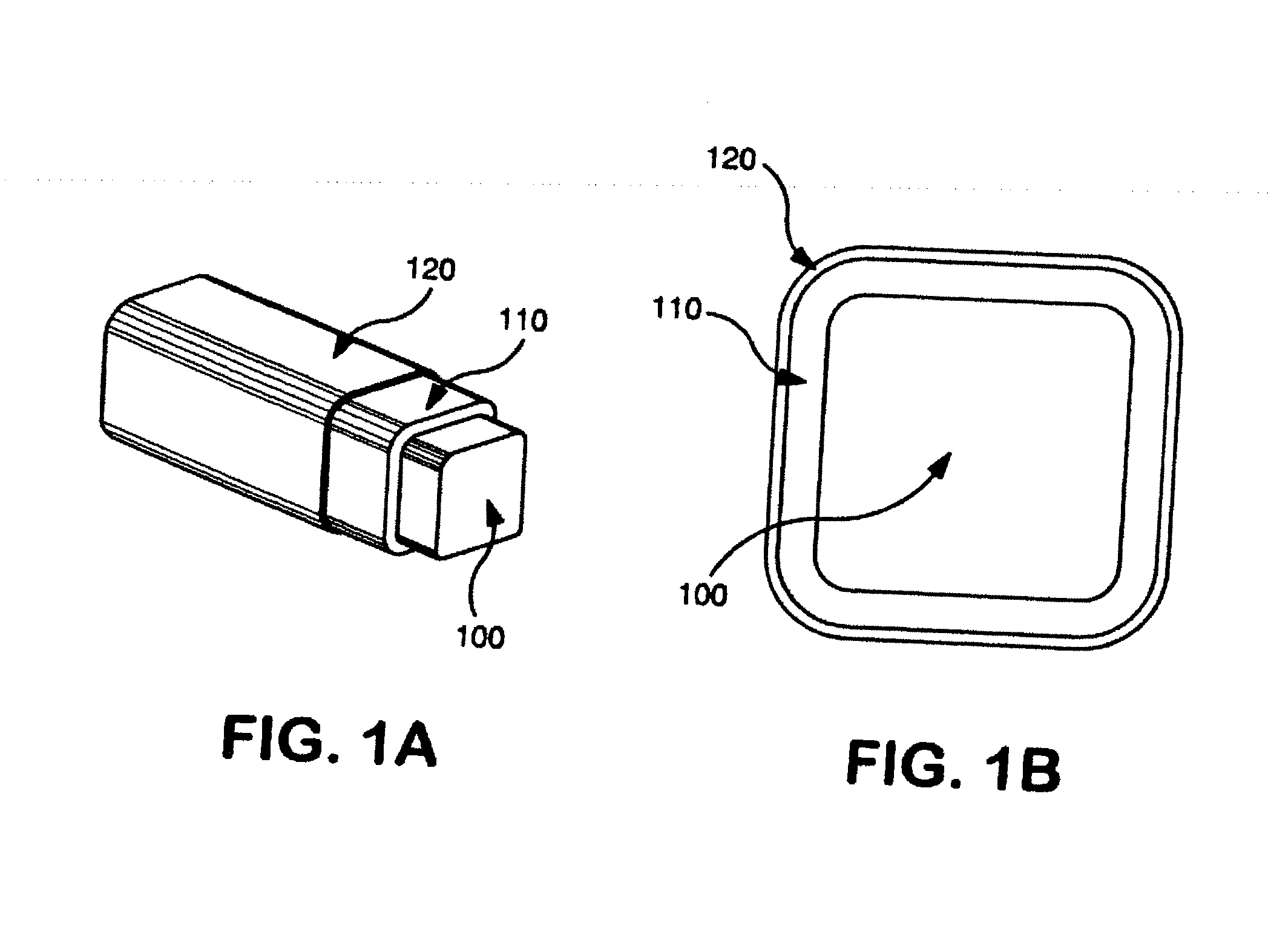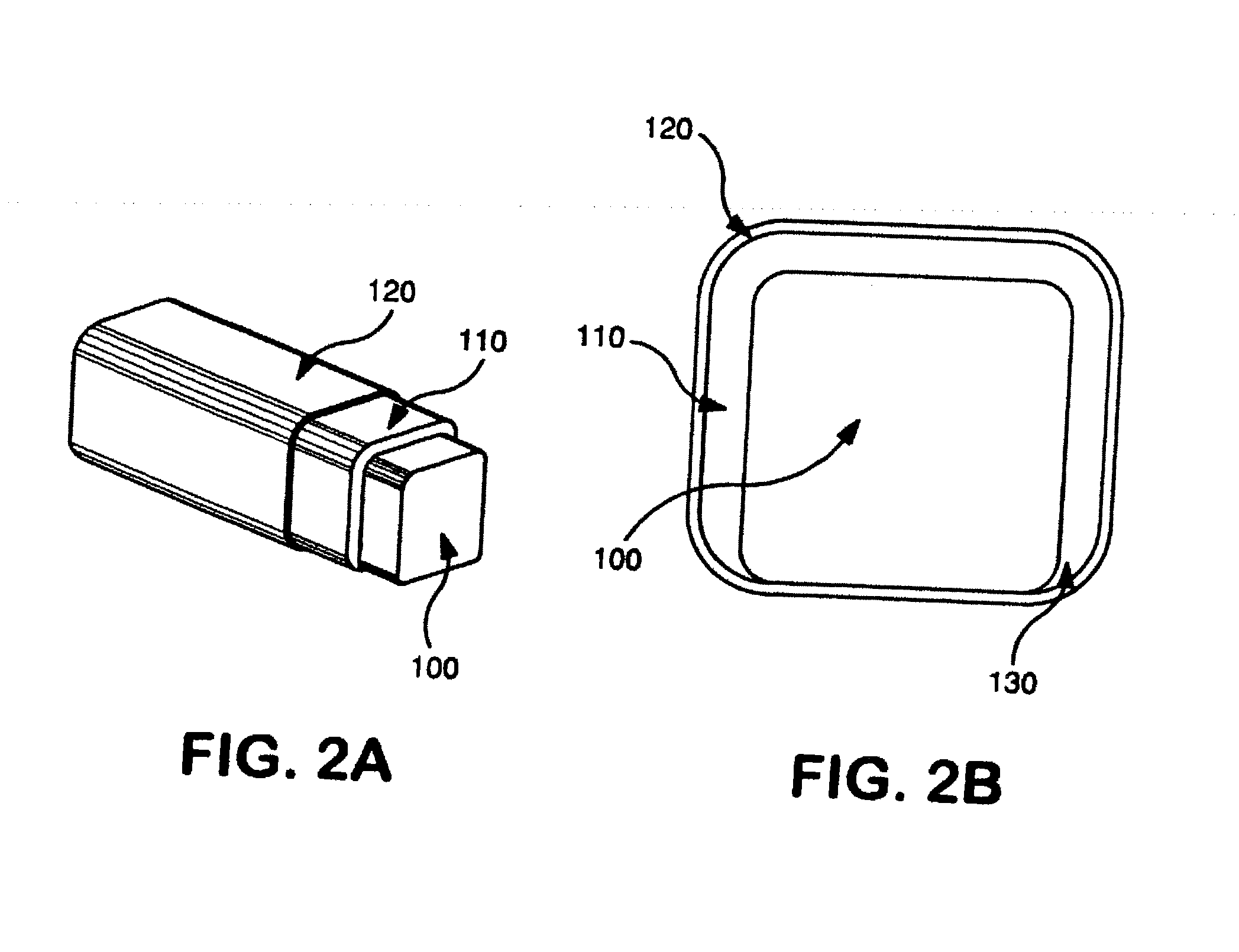Progenitor endothelial cell capturing with a drug eluting implantable medical device
a technology of endothelial cells and medical devices, applied in the field of medical devices, can solve the problems of permanent opening of the affected coronary artery, ischemic damage to the tissues supplied by the artery, and initial attempts at preventive therapy that targeted smooth muscle cell proliferation proved ineffective, and achieve the effect of stimulating positive blood vessel remodeling
- Summary
- Abstract
- Description
- Claims
- Application Information
AI Technical Summary
Benefits of technology
Problems solved by technology
Method used
Image
Examples
example 1
Preparation of Coating Composition
[0172]The polymer Poly DL Lactide-co-Glycolide (DLPLG, Birmingham Polymers) is provided as a pellet. To prepare the polymer matrix composition for coating a stent, the pellets are weighed and dissolved in a ketone or methylene chloride solvent to form a solution. The drug is dissolved in the same solvent and added to the polymer solution to the required concentration, thus forming a homogeneous coating solution. To improve the malleability and change the release kinetics of the coating matrix, the ratio of lactide to glycolide can be varied. This solution is then used to coat the stent to form a uniform coating as shown in FIG. 11. FIG. 12 shows a cross-section through a coated stent of the invention. The polymer(s) / drug(s) composition can be deposited on the surface of the stent using various standard methods.
example 2
Evaluation of Polymer / Drugs and Concentrations
[0173]Process for Spray-Coating Stents: The polymer pellets of DLPLG which have been dissolved in a solvent are mixed with one or more drugs. Alternatively, one or more polymers can be dissolved with a solvent and one or more drugs can be added and mixed. The resultant mixture is applied to the stent uniformly using standard methods. After coating and drying, the stents are evaluated. The following list illustrates various examples of coating combinations, which were studied using various drugs and comprising DLPLG and / or combinations thereof. In addition, the formulation can consist of a base coat of DLPLG and a top coat of DLPLG or another polymer such as DLPLA or EVAC 25. The abbreviations of the drugs and polymers used in the coatings are as follows: MPA is mycophenolic acid, RA is retinoic acid; CSA is cyclosporine A; LOV is lovastatin.™. (mevinolin); PCT is Paclitaxel; PBMA is Poly butyl methacrylate, EVAC is ethylene vinyl acetate...
example 3
[0197]The following experiments were conducted to measure the drug elution profile of the coating on stents coated by the method described in Example 2. The coating on the stent consisted of 4% Paclitaxel and 96% of a 50:50 Poly(DL-Lactide-co-Glycolide) polymer. Each stent was coated with 500.mu.g of coating composition and incubated in 3 ml of bovine serum at 37.degree. C. for 21 days. Paclitaxel released into the serum was measured using standard techniques at various days during the incubation period. The results of the experiments are shown in FIG. 13. As shown in FIG. 13, the elution profile of Paclitaxel release is very slow and controlled since only about 4 pg of Paclitaxel are released from the stent in the 21-day period.
PUM
 Login to View More
Login to View More Abstract
Description
Claims
Application Information
 Login to View More
Login to View More - R&D
- Intellectual Property
- Life Sciences
- Materials
- Tech Scout
- Unparalleled Data Quality
- Higher Quality Content
- 60% Fewer Hallucinations
Browse by: Latest US Patents, China's latest patents, Technical Efficacy Thesaurus, Application Domain, Technology Topic, Popular Technical Reports.
© 2025 PatSnap. All rights reserved.Legal|Privacy policy|Modern Slavery Act Transparency Statement|Sitemap|About US| Contact US: help@patsnap.com



